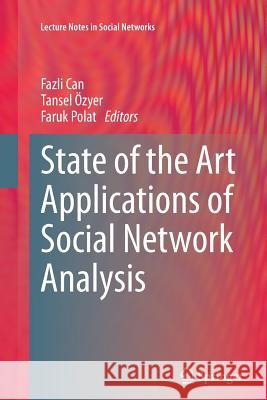State of the Art Applications of Social Network Analysis » książka
topmenu
State of the Art Applications of Social Network Analysis
ISBN-13: 9783319356495 / Angielski / Miękka / 2016 / 372 str.
Kategorie:
Kategorie BISAC:
Wydawca:
Springer
Seria wydawnicza:
Język:
Angielski
ISBN-13:
9783319356495
Rok wydania:
2016
Wydanie:
Softcover Repri
Numer serii:
000408261
Ilość stron:
372
Waga:
5.80 kg
Wymiary:
23.5 x 15.5
Oprawa:
Miękka
Wolumenów:
01
Dodatkowe informacje:
Wydanie ilustrowane











